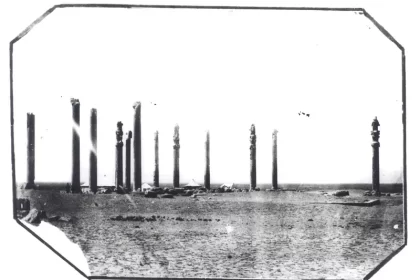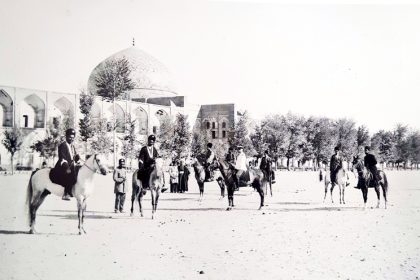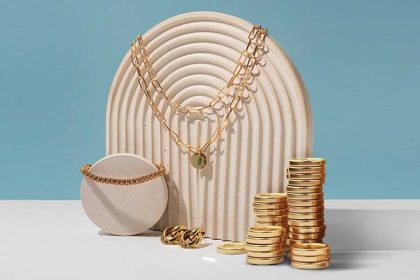Sleeves are one of the most important components of clothes. To the extent that beauty and creativity in clothes are determined by their design. The history of sleeves is very rich and its types are also wide. In this article, in addition to the history, we want to examine the types of women’s sleeves together.
History of women’s sleeves
ancient times
In ancient western cultures, sleeves did not play a very important role. Because in Greek clothes, they only partially covered the arm. The clothes worn also had wide sleeves. Some of the long white Roman dresses that were made of silk also had long sleeves; But only the rich class of society could wear it. On the contrary, in the eastern regions, sleeves played a very important role in history and their models were very important. For example, in ancient China, the sleeves that covered the arm were designed in narrow and long types. It was also very common for women to wear a skirt with a long robe that had tight sleeves.
tip: Clay army figurines show that during the Han Dynasty (189-220 AD) the sleeves of the clothes worn by the soldiers were long.
Medieval
In Europe, the sleeves were cut along with the fabric. These sleeves had two types:
1. The sleeve of our heart or a bat
2. Kimono style wide sleeves
Of course, we will talk about the types of women’s sleeves in detail. For now, we remind you that in the sleeve of the second type, an armpit bird was sewn so that the person can easily move his hand.
14th and 15th century

In the 14th century, the invention of rounded shoulders made it possible to design more fitted sleeves. Following that, tight sleeves became popular. In short dresses, sleeves were designed from elbow to wrist. Some other sleeves were also designed to hang and cut to expose the buttons that were designed to decorate the lining of the dress.
In the later Middle Ages, a great variety was created in the model of sleeves. For example, in France, a kind of bag-like long sleeve was fashionable in the late 14th and early 15th centuries. Also, during the Tang Dynasty, the influence of Turkish fashion on Chinese fashion made the sleeves of women’s dresses to be tighter.
Explanation: The Tang Dynasty is considered as the golden age of Chinese art and culture.
During the Yuan Dynasty (1271-1368), the clothes of both sexes were designed with the same colorful sleeves; But during the Ming Dynasty (1644-1368), the variety of sleeve models returned to its former state.
16th to 18th century

By the late 1400s, hanging sleeves, which had a long tubular shape, became popular and continued to be used until the 17th century. Also, throughout history, these sleeves have been used as pockets in clothes.
During the Tudor period, detachable puff sleeves became fashionable among European women. So that noble women attached these sleeves, which were very decorated and expensive, to their sleeveless dresses.
Explanation: The Tudor period is related to the years 1485 to 1603 in the history of England and Wales and is actually related to the period of the Tudor dynasty’s dominance over England. This period is known as the beginning of King Henry’s reign.
Some time later, detachable sleeves became popular among common Europeans under the name of slit sleeves. This name actually refers to the cut from the sleeve fabric. The popularity of this style also continued until the 17th century, with the difference that the models were much simpler than the previous two centuries and only two parts of the sleeve were cut.
In 1635, women mostly chose dresses with three-quarter sleeves and no pleats, the ends of which were decorated with lace cuffs.
Panel sleeves also became popular in the 16th and 17th centuries. These sleeves consisted of several vertical panels and could be opened. As a result, the lining or underwear was visible. In the 18th century, the sleeves of women’s clothes were tapered up to the arm and then down to the lower arm. Today, these sleeves are known as pagodas. It should also be noted that during the Qingder Dynasty of China, the sleeves of aristocratic clothes were horseshoes.
19th century

At the beginning of the 19th century, the people of the western world considered slit sleeves as old fashion; Therefore, both the slit sleeves and the apple sleeves fell out of fashion.
By the beginning of the Victorian era, the variety of sleeve styles was reduced and only narrow sleeves remained fashionable, as the sleeve style corresponded to the style of narrow-waisted dresses. Following the introduction of the cremoulin, puffed sleeves came into fashion, which usually reached the elbow. Also, in the 1890s, sheepskin, balloon and melon sleeves were included in the group of fashionable sleeves.
tip: Cremoline clothes were made from strong cloth made from horse mane.
20th century until today

1930s and 1940s
In the early 1930s, sleeves were medium in length and narrow in diameter. Even the clothes used by teenagers were like this. During this decade, capelet, capelet, butterfly and even pleated sleeves were also fashionable; But many different types of sleeves were introduced during the 1940s. At the beginning of this decade, sleeves were designed that reached the middle of the elbow. Also, short cap sleeves and slit sleeves are from the same decade.
1950s and 1960s
Sleeves from these two decades included both short and long styles. Even sleeveless dresses were fashionable. Bell sleeves also became popular again in this decade, both in long dresses and in regular blouses. This type of sleeve was fashionable until the mid-1960s, and even later it became an important part of hippie fashion.
1980s and 1990s
Doleman and bat sleeves were popular in the 1980s, and short puffy and pleated sleeves in the 1990s.
2000s and 2010s
The beginning of the 2000s was associated with the fashion of bat sleeves and pleated sleeves. Bell sleeves also became common among people; But the most important change was related to the design of very long hanging sleeves.
In recent decades, we have seen off-the-shoulder and open-shoulder sleeves, which are the most fashionable possible.
Types of women’s sleeves

1. Regular sleeve

As the name suggests, they include the most common type of sleeves and are available in both short and long models. This type of sleeve is used for blouses, t-shirts and simple shirts.
2. Raglan sleeve

This type of sleeve is connected to the upper part of the dress with a diagonal seam from the front of the armpit to the back of the neckline. Mainly, we see raglan sleeves in casual and sportswear. The cut of this type of sleeve is very unique; Because it does not have any space in the shoulder area and creates a beautiful order in the dress.
3. sleeve dropped

Fallen sleeves, which are cut with the entire fabric, cover the upper part of the arm or shoulder and are short.
4. cap sleeve

This model is similar to the previous model, but with the difference that it extends slightly from the shoulder to the arm and is actually longer than the dropped sleeves. However, in general, it is still a type of short sleeve that covers part of the shoulder but never goes below it. Some cap sleeves may be completely attached to the body of the dress; But others are connected to the body of the dress only in one part. Designing a dress with cap sleeves is a very smart choice to create a feminine style.
5. Cuffed sleeves (three quarters)
 The length of this sleeve is between elbow and wrist. When you wear a dress with cuffed sleeves, the gap between your wrist and the dress will be visible. Also, the size between the elbow and the sleeve is about 10 cm.
The length of this sleeve is between elbow and wrist. When you wear a dress with cuffed sleeves, the gap between your wrist and the dress will be visible. Also, the size between the elbow and the sleeve is about 10 cm.
6. Lantern sleeve

The lantern sleeve is included in the category of full sleeves and covers the entire hand. The general state of the lantern sleeves is such that the fabric from the elbow to the wrist has a balloon shape; But it gathers around the wrist to form a lantern.
The lantern sleeve pattern consists of two parts.
First, three-fourths of the length of the sleeve is from the shoulder to slightly above the elbow, which has a semi-circular shape. The second part is from the elbow to the wrist, and when these two parts are sewn together, a beautiful effect is created.
7. Lamb thigh sleeve (triangular)
 The sheep thigh sleeve is one of the most popular fashion sleeves in 2022, which has a very smart design. This sleeve tapers from the shoulder to the wrist and looks just like a sheep’s leg. Of course, it is also called a triangular sleeve. If we are a little creative, we can make the best styles with this sleeve.
The sheep thigh sleeve is one of the most popular fashion sleeves in 2022, which has a very smart design. This sleeve tapers from the shoulder to the wrist and looks just like a sheep’s leg. Of course, it is also called a triangular sleeve. If we are a little creative, we can make the best styles with this sleeve.
8. Juliet’s sleeve
 Juliet’s sleeve looks like a thigh of mutton sleeve. The only difference between the two is that Juliet’s sleeve is designed in two pieces; But the leg of lamb is one piece. It is interesting to know that the model of this sleeve in the 1960s was taken from the dress of the character Juliet in the movie Romeo and Juliet, the upper part of which is puffy and the next part gathers a little above the elbow to the wrist.
Juliet’s sleeve looks like a thigh of mutton sleeve. The only difference between the two is that Juliet’s sleeve is designed in two pieces; But the leg of lamb is one piece. It is interesting to know that the model of this sleeve in the 1960s was taken from the dress of the character Juliet in the movie Romeo and Juliet, the upper part of which is puffy and the next part gathers a little above the elbow to the wrist.
9. Long bell sleeves

These sleeves are completely flared at the edge and create a bell shape in the sleeve.
10. Short bell sleeves

This model is much shorter than the long sleeve. It is also very wide and its length is below the elbow.
11. Pleated / pleated sleeves

This type of sleeve completely covers the elbow and is sewn from there into a pleated piece of fabric. The shape of this fabric is like a pleated skirt in smaller dimensions and with fewer folds.
12. Austin Pagoda

These sleeves absorb the arm from the shoulder to the elbow. At the end, it is connected to a two-layer cloth. Normally, the pagoda sleeve consists of three rows.
13. Bell sleeve

The upper part of these sleeves is simple; But it expands completely from the elbow to the bottom. In the wrist part, the puffy state of the sleeve is gathered with a cuff.
14. peasant sleeve

These sleeves are gathered in the raglan model, which are gathered in the collar and hem with drawstrings or threading.
15. Square sleeve

These sleeves are angular and square designed and not very curved. This feature gives an interesting shape to the sleeve.
16. the sleeve of my heart

Bell sleeves are sleeves that are cut with the fabric of the dress and are attached to the upper body. Therefore, there is no seam between the bodice and the sleeve. Sometimes, for comfort, a bird is also sewn in the armpit.
17. Apple sleeves

In these sleeves, a pad is sewn under the shoulder to create a puffy look in that part.
18. Petal sleeve (tulip)

In tulip sleeves, by sewing two parts of the fabric together, the shape of a tulip flower or petal is created in the sleeve. Also, these sleeves are usually short.
19. Austin Marie or Virago

It is an old sleeve that is usually divided into five complete parts. The pieces are gathered in the same sizes and create a puffy and gathered state in the sleeve.
20. angel sleeve

This sleeve model is wider in the shoulder area than other models and extends to the edge of the sleeve in the same way.
21. butterfly sleeve

This sleeve is puffy at the top and wide near the hem. But it does not have cuffs like regular puffy sleeves.
22. Put your sleeves up
It is a very long and puffy sleeve, the end of which gathers in the cuff. It is a type of old sleeves that are completely puffy and voluminous in the shoulder area. The reason these sleeves are puffy is the use of Apple inside the sleeve. The next part of the sleeve is close to the wrist.
23. Drape sleeves
This sleeve is very voluminous at the top; While in the underarm it is perfectly proportioned and simple. The combination of these two modes creates a drape shape in the sleeve.
24. puffy sleeves

It is interesting to know that in ancient times these sleeves were called gigots. Puffy sleeves can be long or short. As you know, puffs are created as a result of fabric gathering in different parts. For example, some of them gather a few centimeters below the shoulder, others gather at the bottom of the sleeve. The same difference in the puffy parts makes up the different types of these sleeves.
25. Puffy sleeves with straps
This type of sleeve, by drawing a band around the circumference of the sleeve, causes the sleeve to gather and creates a pleated state at the end.
26. hooded sleeve

These sleeves have a strap on the shoulder which is useful for carrying the cloak. They design all kinds of military clothes with these sleeves.
27. Balloon sleeves
 Another type of puff sleeves are; But they are long and because the highest and lowest part of the sleeve is contracted, the shape of a balloon is created in the sleeve.
Another type of puff sleeves are; But they are long and because the highest and lowest part of the sleeve is contracted, the shape of a balloon is created in the sleeve.
28. bat sleeve
 They are cut along with the fabric itself and are long. They are gradually narrowed a little below the middle towards the wrist.
They are cut along with the fabric itself and are long. They are gradually narrowed a little below the middle towards the wrist.
29. Circular sleeve

The fabric of this sleeve is cut in the shape of a circle and has many folds.
30. Winged wavy sleeves

These sleeves are very full and short and gather in a wavy manner. When they open, they look like angel wings.
31. kimono sleeves

The kimono sleeve is actually inspired by traditional Japanese clothes and is a kind of integrated sleeve. It is cut with a hem and extends from the body of the dress to the wrist. The design of kimono sleeves is somewhat similar to bat sleeves. This sleeve is more suitable for designing informal clothes.
32. Layered sleeves

In layered sleeves, several fabrics are sewn together and create this shape in the sleeve.
33. hanging sleeve
 This sleeve is very long and its fabric is cut a little above the elbow to the end and it hangs on both sides. Hanging sleeves have different models.
This sleeve is very long and its fabric is cut a little above the elbow to the end and it hangs on both sides. Hanging sleeves have different models.
34. Patched elbow sleeves

In this type of sleeve, a patch is sewn on the elbow to protect the fabric from wear and tear.
35. Slit sleeve

Slit sleeves include cut lines on the fabric that reveal the fabric underneath. The bottom fabric usually has a contrasting color to the color of the sleeve.
36. Off-shoulder sleeves
 It is said that the sleeves do not cover the shoulder and therefore the whole arm is exposed. Open shoulder sleeve has an attractive and stylish model and can be used for all kinds of situations. To create a style with open shoulder sleeves, silk and satin fabrics are more useful.
It is said that the sleeves do not cover the shoulder and therefore the whole arm is exposed. Open shoulder sleeve has an attractive and stylish model and can be used for all kinds of situations. To create a style with open shoulder sleeves, silk and satin fabrics are more useful.
38. Austin Gibson Girl

Again, it is an old type of sleeve that is puffy from shoulder to elbow and simple from elbow to wrist.
39. Poet’s sleeve

This sleeve is available from the shoulder to the sleeve in both normal and pleated models. The head of the sleeve is also usually voluminous.
41. Melon sleeves

This sleeve has short and long types. The short version covers around the shoulder and the long version continues from the shoulder to the elbow. The long type has a shape similar to a melon, so it is called a melon sleeve.
42. Austin Gauntlet

It is one of the long sleeves, and the end of it, which is placed on the wrist or the same size as it, is in the shape of the Persian number seven or the English letter V.
43. Sleeves without shoulders

The fabric of this sleeve is attached to the dress from the body part, it only covers a part of the elbow and the shoulder is open. This type of sleeves has been fashionable since 2010 and has many fans. It is mostly designed for casual wear and is suitable for use in hot seasons.
last word
We reviewed the history of women’s sleeves and its types together. From ancient times to today, sleeves have been designed to pursue an important purpose and are one of the factors of beauty and appearance of clothing. Also, the major part of creativity in the model of our clothes in formal and informal events, hot and cold seasons depends on the model of the sleeves of our clothes. Now tell us which type of sleeve do you like the most? Share your thoughts with us.
RCO NEWS

















